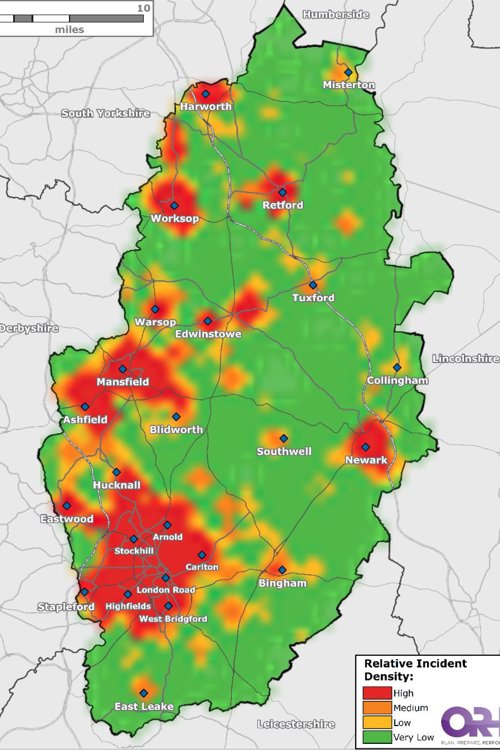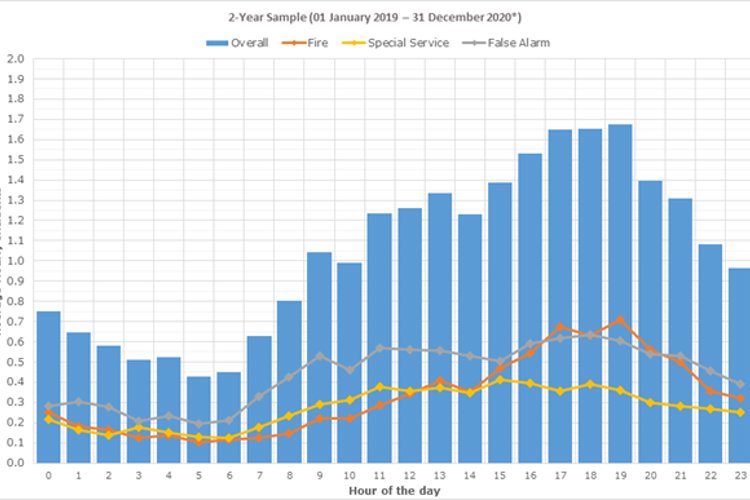4 Community risk assessment
Political factors
Fire sector reform
- The Fire Standards Board continues to develop national professional standards for the fire and rescue sector
- Recommendations in the annual State of Fire reports produced by Her Majesty’s Inspectorate of Constabulary and Fire & Rescue Services (HMICFRS) propose changes to the way the fire service currently operates – including changes to governance and the terms and conditions of firefighters
- The Fire and Rescue National Framework for England is updated every few years. The current framework was published in 2018 and a revision is expected within the lifetime of this plan
To mitigate the risks arising from these areas we will:
- Continue to adopt new professional fire standards into our ways of working, as they are published
- Keep a watching brief on other sector reforms
Economic factors
Public finances
The Government’s spending review provides a financial settlement for fire services for the 2022/23 financial year with some uncertainty about future years’ funding. We will use our best estimations and sector understanding to plan our medium-term financial focus.
We will:
- Continue to update our Medium-Term Financial Strategy (MTFS)
Firefighters pension schemes
Legal rulings on firefighter pension scheme changes are likely to result in increased costs and workloads for pension scheme administration. We expect the costs of this to be covered by the Government, but there’s a risk that some costs will fall to the Fire Authority.
- We will monitor this through our financial risks register
Socio-cultural factors
Population changes
Our communities continue to grow and become more diverse. People are typically living longer, and more people are living alone.
Sadly, statistics show that as people live longer they are more likely to have mobility issues or long-term health conditions, such as dementia. This means people can become more likely to have accidents or fires in their home.
We will continue to review our prevention, protection and response work to make sure we’re effective and providing equality of access to our services. To mitigate this area of risk we will:
- Continue our data-led approach to offer fire prevention advice to people most at risk
- Continue to develop our partnerships with health and social care agencies to deliver joined-up services for individual needs
- Further develop our relationships within communities, ensuring our staff are able to tailor our services to be relevant and accessible to everyone
Housing and infrastructure developments
Significant regeneration activity is underway across Nottinghamshire to:
- Build new homes and business premises
- Develop transport infrastructure
To ensure the safety of our communities we will continue to:
- Provide regulated fire safety advice to developers to ensure new developments are compliant and to encourage high standards of fire protection
- Ensure our firefighters have up-to-date risk information about new developments
Terrorism
Terrorism continues to be a serious threat to the UK. This threat from extremism means we must remain vigilant and ready to respond. We have assets that are on national standby to help in the event of an attack anywhere in the country.
We will:
- Monitor the national and local threat levels and ensure the competence and skills of our workforce to respond to these types of incidents
Technological factors
Digital services
Information technology (IT) systems and digital technologies give opportunities to deliver better outcomes for our staff and communities. The improved capability and availability of mobile technology means we can provide better access to information for firefighters at incidents. This will improve their safety and reduce the risk to the public.
We will:
- Review our use of IT and what emerging technologies are available to help improve our performance
There has been a significant increase in the number of internet users across all age groups. However, there is also a significant proportion of people in Nottinghamshire who have never accessed the internet.
We will:
- Maintain equality of access to our services for those who are not internet users
Legal factors
Changes to building safety legislation
New legislation relating to how we inspect buildings will come into effect during the life of this plan. We will:
- Adapt our ways of working to incorporate the changes required to meet our statutory obligations
Environmental factors
Climate change
This is changing the types of incidents we attend:
- Hot summers can lead to increased forestry and outdoor fires
- Wetter weather is leading to more localised and wide-scale flooding
- Increased numbers of storms can lead to damage to structures and properties
Nottinghamshire continues to see growth in renewable energy production, such as wind and solar farms, and increasing use of alternatively fuelled vehicles.
We will:
- Ensure our firefighters’ skills and equipment keep pace with this area of change
Organisational factors
Workforce
Through our workforce planning, we ensure the Service has the optimum number of employees with the right skills to deliver our services professionally, effectively and safely. There are a number of challenges we face to ensure that we meet current and changing demands.
Societal changes have made it increasingly difficult to recruit and retain on-call firefighters. This means we will have to continue to review our approach and find innovative solutions.
During the life of this plan there will be changes to public sector pensions. This is likely to affect us in several ways:
- Pension changes mean that in 2022/23 we are likely to see an increasing number of our operational staff retire. This will create increased demand for recruitment, training, and development
- The extension of the retirement age also means that we must adapt to ensure that our operational staff stay fit, healthy and competent for longer
In a competitive recruitment market, we need to ensure that we offer appropriate rates of pay, benefits, and development opportunities to attract and retain a skilled and motivated workforce. We aim to be an employer of choice.
We will:
- Ensure that our Workforce Plan is reviewed and we continue to adapt our ways of working to recruit and retain the people with the skills, knowledge and experience we need to deliver our services
Fire Cover Review
Alongside the SAoR, we also undertake a Fire Cover Review (FCR). A FCR is a way of using data to work out which parts of the county are most at risk of fire and other emergencies.
In 2021, we commissioned an independent sector specialist to undertake our most in depth FCR to date. This provided us with a comprehensive assessment of risk and detailed analysis of when, where and what incidents are most likely to occur across our county.

The review used multiple data sets including:
- Health data
- Demographic data
- Deprivation data
- Census data
- Crime data
- Over ten years of incident data
This analysis helps us to make sure we have our fire stations and fire engines located where they are most likely to be needed. It also helps us target our prevention activities at those communities where we can have the greatest impact. We refer to this approach as ‘resourcing to risk’.
For example, Figure 1 shows where fires and other incidents occur most often across the county. Figure 2 shows the time of day that fires are most likely to occur.
The analysis shows a number of potential areas of under and over provision in our current arrangements. To ensure we continue to deliver the most efficient and effective service to our communities, we will undertake further evaluations using both the SAoR and FCR, along with other sources of information, during the lifetime of this plan.
